- News
- Reviews
- Bikes
- Accessories
- Accessories - misc
- Computer mounts
- Bags
- Bar ends
- Bike bags & cases
- Bottle cages
- Bottles
- Cameras
- Car racks
- Child seats
- Computers
- Glasses
- GPS units
- Helmets
- Lights - front
- Lights - rear
- Lights - sets
- Locks
- Mirrors
- Mudguards
- Racks
- Pumps & CO2 inflators
- Puncture kits
- Reflectives
- Smart watches
- Stands and racks
- Trailers
- Clothing
- Components
- Bar tape & grips
- Bottom brackets
- Brake & gear cables
- Brake & STI levers
- Brake pads & spares
- Brakes
- Cassettes & freewheels
- Chains
- Chainsets & chainrings
- Derailleurs - front
- Derailleurs - rear
- Forks
- Gear levers & shifters
- Groupsets
- Handlebars & extensions
- Headsets
- Hubs
- Inner tubes
- Pedals
- Quick releases & skewers
- Saddles
- Seatposts
- Stems
- Wheels
- Tyres
- Health, fitness and nutrition
- Tools and workshop
- Miscellaneous
- Tubeless valves
- Buyers Guides
- Features
- Forum
- Recommends
- Podcast
review
£149.99
VERDICT:
OK as a helmet and good for phone calls, but not much else
Weight:
335g
Contact:
At road.cc every product is thoroughly tested for as long as it takes to get a proper insight into how well it works. Our reviewers are experienced cyclists that we trust to be objective. While we strive to ensure that opinions expressed are backed up by facts, reviews are by their nature an informed opinion, not a definitive verdict. We don't intentionally try to break anything (except locks) but we do try to look for weak points in any design. The overall score is not just an average of the other scores: it reflects both a product's function and value – with value determined by how a product compares with items of similar spec, quality, and price.
What the road.cc scores meanGood scores are more common than bad, because fortunately good products are more common than bad.
- Exceptional
- Excellent
- Very Good
- Good
- Quite good
- Average
- Not so good
- Poor
- Bad
- Appalling
The MFI Lumex Pro helmet seeks to combine protection with handlebar-controlled indicators and brake lights for visibility, as well as the ability to listen to music or speech and make phone calls. It manages to do one of these things well, but the overall package leaves a fair bit to be desired.
- Pros: Looks OK, audio quality for phone calls is excellent, can use Siri for voice dialling
- Cons: Poor quality, ill-fitting remote control, indicators not bright enough, 'bone conducting' speakers fail to work, no manual lights activation, brake sensor works erratically, charge level indication limited
Whether you actually want or need a technology-laden helmet will likely predestine your views on the MFI Lumex Pro. Clearly MFI had one or two ideas on enabling 'smart' features into a safety device, and never stepped away from the drawing board to consider the questions of 'why', 'what for' or 'is it actually useable' in a real-world context.
On the face of it the Lumex Pro is an OK-to-good-looking helmet. The styling is reasonable, the faux-carbon patterning might be to your taste, and the use of logos is sedate. Given the electronic gubbins involved and the thick padded chinstrap, the 335g weight isn't bad either – in use I couldn't really notice the difference between that and my go-to MIPS-equipped helmet.
The fit likewise is OK – not the most comfortable I've worn, but then heads are odd things. The rear retention ratchet mechanism works well, and the chinstrap is comfortable and easily adjusted, with a magnetic buckle that is both secure and easy to work with thick gloves on. There's an insect-mesh padded liner, and a spare in the box along with a helmet bag. There's a hilariously poorly translated and techno-waffle-laden instruction manual, and additional quick-start guide which does the job to get you going.
Had MFI stopped there, I'd say, that extra weight aside, it would make a 3-star helmet in its own right for about £40.
Bone of contention
A major selling point of the MFI Lumex Pro is that it has 'bone conducting speakers' – meaning you can listen to things while cycling without compromising hearing traffic or other things like birds or your badly tuned gears. We've reviewed bone-conducting headphones like the Trekz Titanium, finding them to be OK for the money, and for the purpose of this review I borrowed a set to compare (thanks Alistair).
What I can categorically state is that the Lumex Pro is NOT a set of bone-conducting headphones. There are two speakers embedded in the helmet itself above the ears and in line with the temples, and as the helmet is padded they never actually touch the skin, therefore 'bone conduction is impossible.
Basically, it's like wearing a tinny-sounding ghetto blaster on your head – everything you can hear, those around you can hear. This was evident on a few long countryside rides, where I actually quite got into listening to podcasts (on functional training for cyclists, if you must) where I realised that walkers were turning their heads earlier than I'd usually expect when approaching from behind. A quick fumble for the pause button on the chinstrap to maintain their sense of tranquility, then away again. The chinstrap controls actually aren't bad – main button for play/pause, and the two smaller buttons for volume up/down and track skip.
Phone calls
The chinstrap also houses the microphone for making phone calls, with the large button working as answer/hangup and redial last number by pressing twice. The bluetooth pairing process with my phone was easy enough, and it automatically paired when the helmet was subsequently turned on. When a call is received you get an alert, and can answer or reject the call.
What is quite useful is the ability to activate Apple's Siri service to issue voice commands – so if you want to send a text or make a call, you can do so without getting your phone out of your pocket, unlocking it or removing it from a waterproof case. This feature isn't described in the instructions, and is activated by a short press of the main button to liven the mic and get the two tones that Siri is listening. The controls work well, even under three layers of wintry Dissent 133 gloves.
The quality of the microphone is the standout feature of the Lumex Pro. At speeds of around 20kph it wasn't possible for my wife to detect any wind noise, and the voice quality was very good. At closer to 30kph, with wind rushing in my ears, the mic was only picking up the faintest trace of wind noise, and the audio was still clear. A side-by-side comparison with a high-end £100 bluetooth earpiece showed the Lumex was impressively good at removing almost all wind noise – the alternative headset suffered considerable degradation as speed increased, as it struggled to cancel out increasing wind noise.
Charging
Charging is via the provided USB-C cable, plugging into the inside of the helmet. The LEDs flash alternating sides until charged, but there's no external battery level indication. Battery level is only visible by pairing to your phone, then (assuming it's an iPhone) swiping down to open Notifications, then right to open Widgets. All connected Bluetooth devices are shown under 'Batteries'. It seems a glaring omission, not to have used any of the seven LEDs to the left or right of the rear of the helmet to show battery level on startup or power down. Even then the battery level indication is 'chunky' – the only charge levels shown are 100%, then 70, 50 and 30%. Once you hit 30% you get a warbling low battery tone every few minutes.
Over a three-hour ride, with the lights on, listening to an hour's worth of podcasts and making a few calls, the battery dropped to 70%. Half an hour further on it was down to 50%. Leaving the helmet sat for another five hours it was down to 30%, at which point the Bluetooth connection turned off and wouldn't turn back on. Shortly after, the LEDs turned off as well. Charge time from empty is about two hours from a fast charger.
From a weather standpoint, both the remote and helmet survived five minutes under the road.cc Gardensprinkler-Downpour-Simulator-Of-Doom seemingly OK, but then the remote stopped working and didn't start again.
Indications are...
Our John Stevenson has quite a bit to say about indicators on bikes here.
Here, the indicators are built into the helmet, covered by a layer of material that makes them pretty well hidden when not in use. They are operated by a large handlebar remote control, for which the bracket has to be zip-tied to the bar – no easy-release O-ring option here. The build of the remote and bracket is of brittle-feeling plastic, and there's a loop of material attached at one end by a clip that seems to serve no useful purpose other than to get in the way of fitting or removing the remote. The remote pairs with the helmet easily enough by pressing a small button on the helmet and then the remote, but I found after a few days' sitting idle it would lose the pairing.
Once paired, the remote activates the lights, with a simple forward-arrow press for both left and right sides to flash together, left arrow for left side and right for right. They auto-cancel back to both flashing after 20 seconds, so if you're sat at a set of lights you need to remember to keep pressing the button – and after you move off you will continue indicating until it times out or you remember to press the forward button again. The lights turn off with a long press of the remote power button.
One point of note – if you walk into a cafe, work, or your house with the helmet flashing, there's no way to turn it off without walking back out to your bike and stopping it using the remote. The controls on the chinstrap don't affect the lights in any way. Likewise, if the remote goes flat, falls off or gets lost, the lights will stay in the state last set.
The LEDs are maybe 20 lumens if that – they are pretty much of no use in the daytime, and even at night are pretty much invisible beyond around a hundred yards to a motorist with a glowing dashboard in front of them.
Wearing the helmet you are aware of the front white LEDs flashing on your forearms and bars/stem – wearing a reflective jacket this was most noticeable in the dark and was quite distracting – much as bike lights shining on external shift cables can be. Depending on the angle of your bike computer, you may get a direct reflection even in daylight. There's no option to have the lights just on solid.
The indicator lights double as 'brake lights', with an accelerometer sensing decelerations and activating both lights on solid for three seconds. I found this function to be next to useless – there were so many false positives and failed actuations even under hard braking as to render it incomprehensible, even assuming a motorist or other cyclist was expecting to see a brake light and react to it. And again, the dimness of the LEDs would render it ineffectual from the outset. Slight changes in head angle – for example, looking down at my bike computer – would falsely trigger it.
Conclusion
So to summarise: it's an OK-looking helmet that fits me well, and the voice quality and controls for phone calls is very good. But the audio from a music point of view is abysmal, the term 'bone conducting' surely breaches trading standards, and the indicators/brake lights are as effective as the proverbial choccy teapot. And the remote isn't waterproof. There are far better, cheaper, less annoying and more practical options for listening to audio while cycling, if that's your thing.
I can see a place for helmets with built-in phone functionality – making a call to advise of delays, order food or to organise the bath to be run is simply a faff you don't need in full winter kit, in the rain. Apple's face unlock is going some way to removing the gloved hand as an issue here, but you still need to retrieve your phone from a pocket, which really does mean stopping lest something goes awry. Being able to press a button, say 'Hey Siri, Message to [spouse name], smoke me a kipper, I'll be home for breakfast' is actually quite nifty. As is taking a call to explain where that thing that you put away in the wrong place is, without breaking your cycling rhythm.
Is the MFI Lumex Pro the helmet you need? Possibly. At £150 you're getting a lot of stuff that doesn't really work, though, and a few things that do. The Livall Bling smart helmet is a near-identical concept, with more functionality and a lower £100 price tag – but likewise suffers from low-power LEDs, issues with audio quality and a fairly ugly remote.
> Buyer's Guide: Everything you need to know about cycling helmets
It seems the 'smart helmet' market is driven less by rider-centric research and more by engineers throwing ideas at walls. Maybe someone will design and deliver decent functionality one day. Until then, this is about it.
Verdict
OK as a helmet and good for phone calls, but not much else
road.cc test report
Make and model: MFI Lumex Pro Helmet
Size tested: Large
Tell us what the product is for and who it's aimed at. What do the manufacturers say about it? How does that compare to your own feelings about it?
It's aimed at people who want to do many things with their helmet - lighting, audio and phonecalls.
MFI (My Future Innovation) says: "The flagship MFI LUMEX PRO smart and safe cycle helmet is a multi-functional lightweight helmet that combines multimedia functionality with best in class safety features. High intensity LED lights ("Lumex"), white in front and red in the rear give strong visibility in any weather and road conditions. Additional safety features include indicating rear lights combined with speed sensor brake lights to further protect riders on the road. MFI LUMEX PRO is also a multimedia hub, and includes the ability to make and receive phone calls, and via your phone listen to turn by turn directions, Pod casts, the news and your favorite music. Sound is played via bone conducting audio inside the helmet to deliver great quality sound without jeopardizing the riders ability to still hear the ambient traffic sounds around them. Most functions are accessible from the helmets handlebar remote control which is included with the helmet."
Tell us some more about the technical aspects of the product?
From MFI:
High intensity LED lights ("Lumex"), white in front and red in the rear give strong visibility in any weather and road conditions.
Smart LED inductive lighting with indicator turn signals and handlebar controls
MFI LUMEX PRO is also a multimedia hub, and includes the ability to make and receive phone calls, and via your phone listen to turn by turn directions, Pod casts, the news and your favorite music.
Battery life: Up to 8Hrs - 180 days standby - Micro USB charging
Bone conduction audio
Rate the product for quality of construction:
6/10
The helmet itself feels well-enough made but the remote and bracket are cheap. And the remote isn't waterproof.
Rate the product for performance:
6/10
Parts of the package work really well, but most of it doesn't.
Rate the product for durability:
6/10
Seems physically robust, but the pairing process needed repeating, and the remote stopped working when it got wet.
Rate the product for weight (if applicable)
7/10
Considering what's in it, 335g isn't too bad.
Rate the product for comfort (if applicable)
8/10
It fitted me surprisingly well, and felt comfy for the weight.
Rate the product for value:
2/10
This is a lot of money for a number of things that don't really work.
Tell us how the product performed overall when used for its designed purpose
While phonecalls worked really well, the rest of the functionality was pretty poorly executed. The Brake function was useless, the LEDs aren't bright enough, and the indicator controls and timing are questionable.
Tell us what you particularly liked about the product
Voice calling.
Tell us what you particularly disliked about the product
Audio quality, loudness, and non-functional safety features. Also a remote that wasn't waterproof.
How does the price compare to that of similar products in the market, including ones recently tested on road.cc?
The Livall Bling BH60SE is £50 cheaper and includes more features such as a crash detector.
Did you enjoy using the product? Yes-ish.
Would you consider buying the product? No
Would you recommend the product to a friend? No
Use this box to explain your overall score
Overall, this product isn't really fit for the multiple purposes described. The numerous shortcomings don't justify the premium price tag, and the delivery feels low-rent. The non-waterproof remote is a glaring omission.
About the tester
Age: 45
I usually ride: Merida Ride 5000 Disc My best bike is: Velocite Selene
I've been riding for: Over 20 years I ride: A few times a week I would class myself as: Expert
I regularly do the following types of riding: cyclo-cross, club rides, general fitness riding, mountain biking, Dutch bike pootling.
Living in the Highlands, Mike is constantly finding innovative and usually cold/wet ways to accelerate the degradation of cycling kit. At his happiest in a warm workshop holding an anodised tool of high repute, Mike's been taking bikes apart and (mostly) putting them back together for forty years. With a day job in global IT (he's not completely sure what that means either) and having run a boutique cycle service business on the side for a decade, bikes are his escape into the practical and life-changing for his customers.
Latest Comments
- slappop 44 min 37 sec ago
Hopefully it'll still be allowed for recreational use.
- Bungle_52 1 hour 36 min ago
Well Gloucestershire are getting better. I'm being told whether or not action is to be taken, but not what action, within a few days of each report...
- belugabob 2 hours 23 min ago
Surely Lincolnshire is a prime location for UK cycle infrastructure - after all, it's flat, so should assuage the most common excuse that people...
- KDee 2 hours 36 min ago
Yes! 100% a Pace!
- Zazz53 3 hours 57 min ago
I did my first BC intro to coaching course last year and really enjoyed it. But I am not a member of a cycling club and ride with groups of like...
- DogOfOB 4 hours 2 min ago
Hmm - crashing off the side of a mountain at 48kmh sounds a lot safer than crashing off the side of a mountain at 55. Yeah....
- Surreyrider 4 hours 5 min ago
Churnalism nowadays - mostly clickbait stuff and regurgitation in the local rags/comics and beyond.
- DogOfOB 4 hours 17 min ago
I'm glad the barrier wasn't damaged. Whew, close one there! \s
- bensynnock 4 hours 27 min ago
I repurposed a bent rear derailleur hanger into a keyring. It's very useful, and you can use it to open bottles of beer.
- Secret_squirrel 4 hours 41 min ago
My bum hates Flites. Worse saddle ever for me.









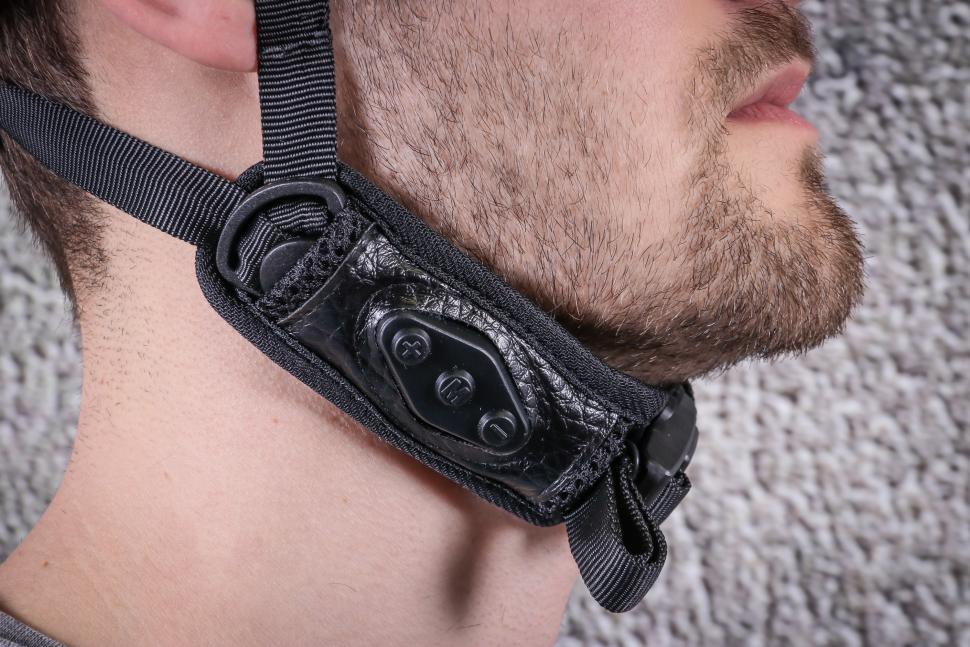
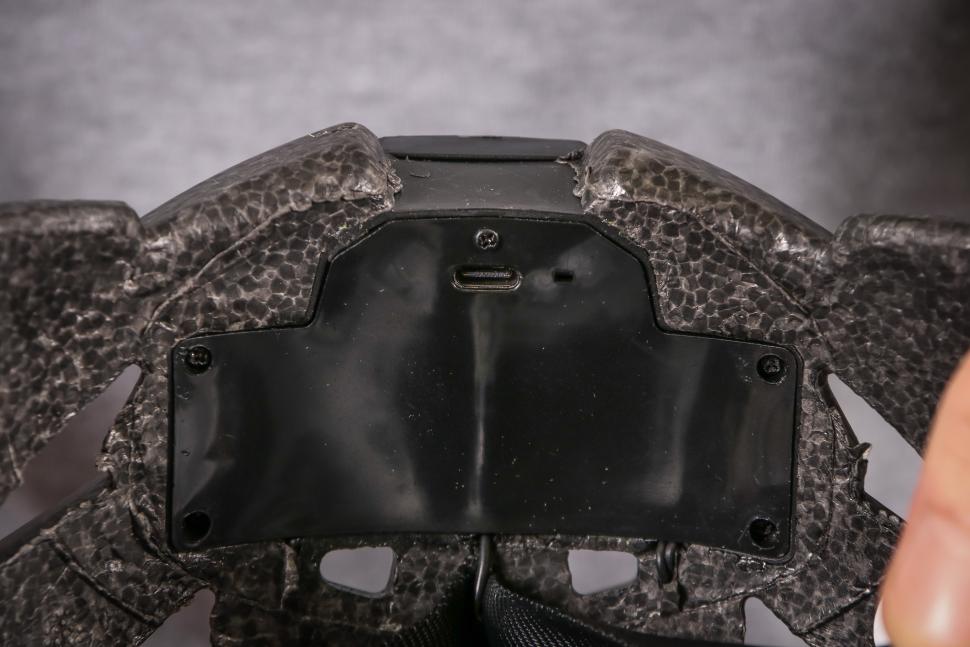
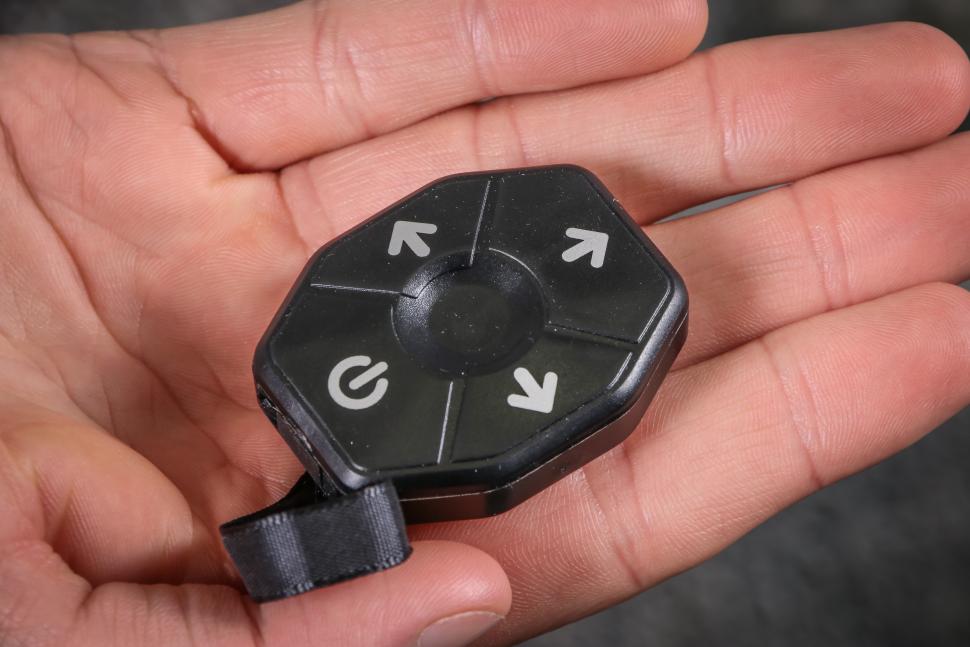

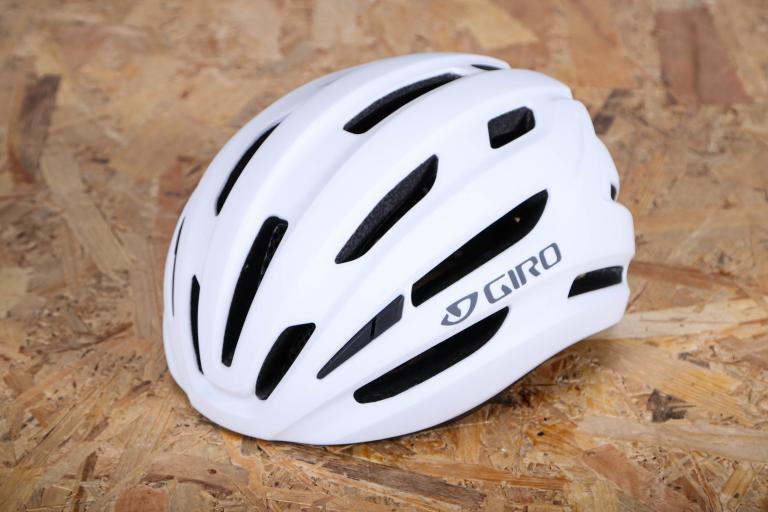
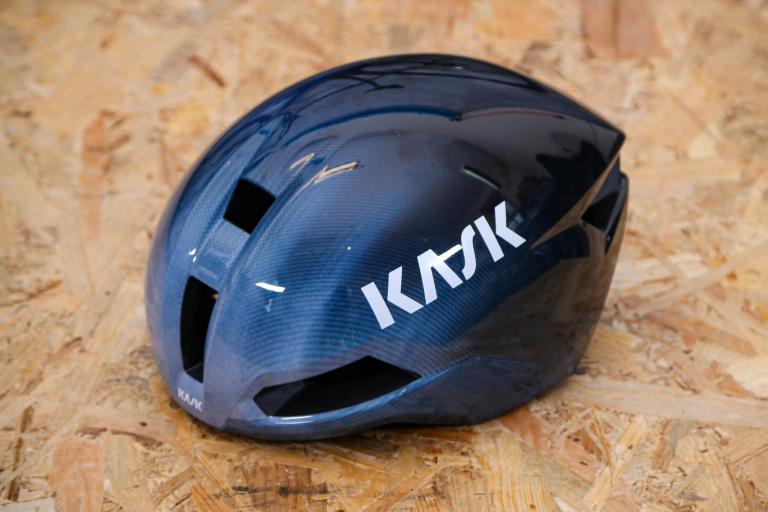
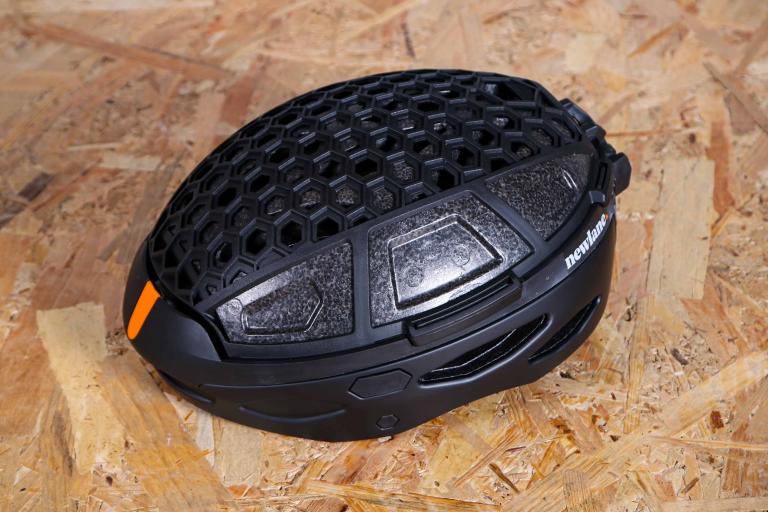
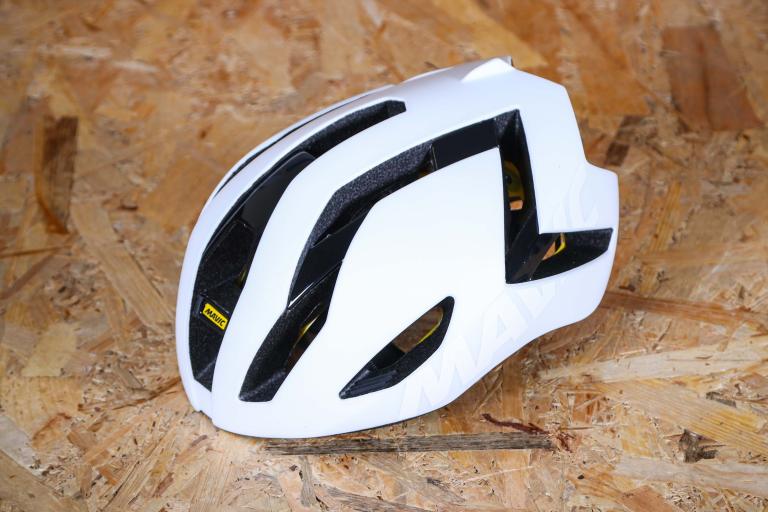
Add new comment
5 comments
I thought MFI made furniture.
Helmet indicators seem fairly useless, I can't see any driver seeing or taking any notice of them, that is if they can even tell what they mean as they are too close together.
If they were mounted on a trailer board fastened to the helmet then this would be a lot more practical.
I think it is a good attempt. An engineer after 5 glasses of wine , jotted down everything a bike helmet could be......and he suceeded. Look at all the kit it has and stuff it does.
It will sell well, online to engineers who own a bicycle.
Not this engineer, nor I suspect all the ones who design all the wonderful bikes and kit that we all ride.
No wonder MFI went under.
That chinstrap is preposterous...
But it might open up a whole new market for the manufacturer...